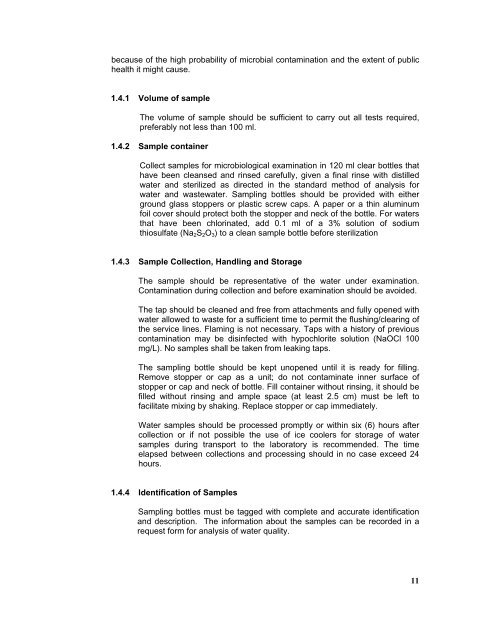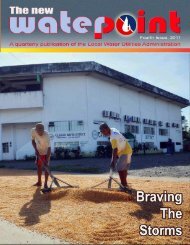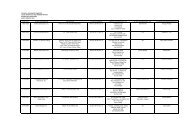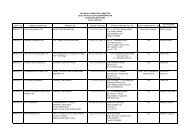Philippine National Standards for Drinking Water - LWUA
Philippine National Standards for Drinking Water - LWUA
Philippine National Standards for Drinking Water - LWUA
You also want an ePaper? Increase the reach of your titles
YUMPU automatically turns print PDFs into web optimized ePapers that Google loves.
ecause of the high probability of microbial contamination and the extent of public<br />
health it might cause.<br />
1.4.1 Volume of sample<br />
The volume of sample should be sufficient to carry out all tests required,<br />
preferably not less than 100 ml.<br />
1.4.2 Sample container<br />
Collect samples <strong>for</strong> microbiological examination in 120 ml clear bottles that<br />
have been cleansed and rinsed carefully, given a final rinse with distilled<br />
water and sterilized as directed in the standard method of analysis <strong>for</strong><br />
water and wastewater. Sampling bottles should be provided with either<br />
ground glass stoppers or plastic screw caps. A paper or a thin aluminum<br />
foil cover should protect both the stopper and neck of the bottle. For waters<br />
that have been chlorinated, add 0.1 ml of a 3% solution of sodium<br />
thiosulfate (Na 2 S 2 O 3 ) to a clean sample bottle be<strong>for</strong>e sterilization<br />
1.4.3 Sample Collection, Handling and Storage<br />
The sample should be representative of the water under examination.<br />
Contamination during collection and be<strong>for</strong>e examination should be avoided.<br />
The tap should be cleaned and free from attachments and fully opened with<br />
water allowed to waste <strong>for</strong> a sufficient time to permit the flushing/clearing of<br />
the service lines. Flaming is not necessary. Taps with a history of previous<br />
contamination may be disinfected with hypochlorite solution (NaOCl 100<br />
mg/L). No samples shall be taken from leaking taps.<br />
The sampling bottle should be kept unopened until it is ready <strong>for</strong> filling.<br />
Remove stopper or cap as a unit; do not contaminate inner surface of<br />
stopper or cap and neck of bottle. Fill container without rinsing, it should be<br />
filled without rinsing and ample space (at least 2.5 cm) must be left to<br />
facilitate mixing by shaking. Replace stopper or cap immediately.<br />
<strong>Water</strong> samples should be processed promptly or within six (6) hours after<br />
collection or if not possible the use of ice coolers <strong>for</strong> storage of water<br />
samples during transport to the laboratory is recommended. The time<br />
elapsed between collections and processing should in no case exceed 24<br />
hours.<br />
1.4.4 Identification of Samples<br />
Sampling bottles must be tagged with complete and accurate identification<br />
and description. The in<strong>for</strong>mation about the samples can be recorded in a<br />
request <strong>for</strong>m <strong>for</strong> analysis of water quality.<br />
11







